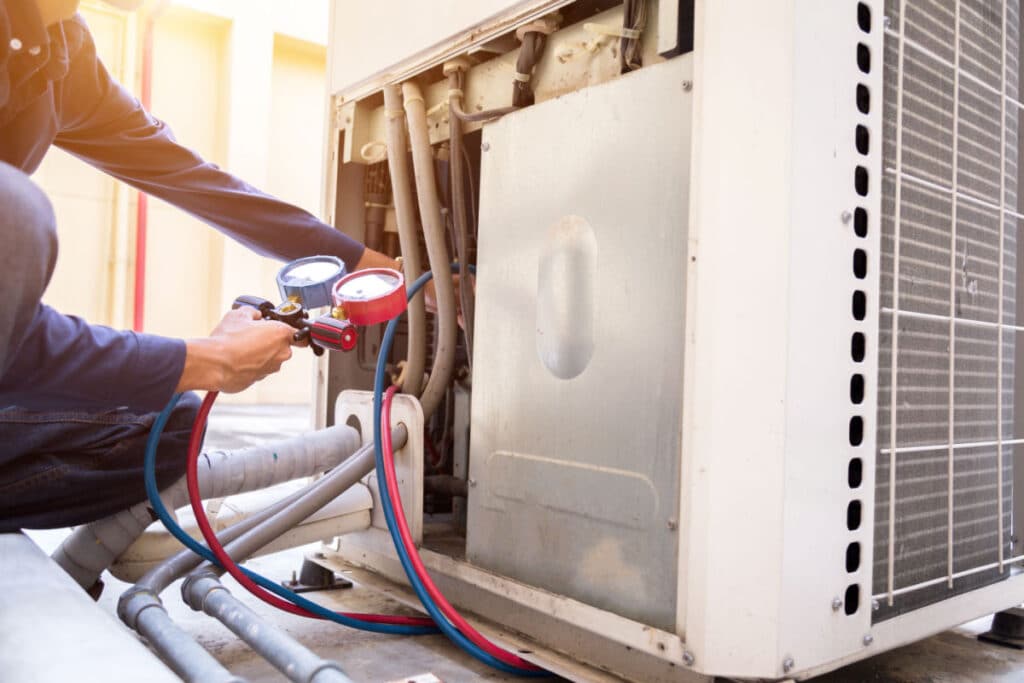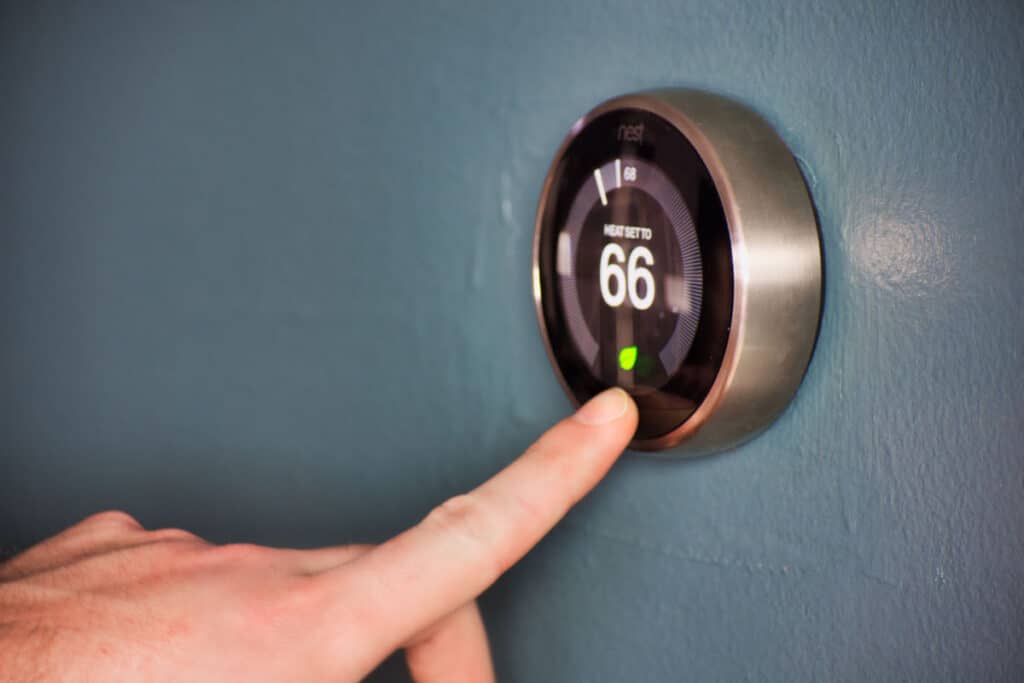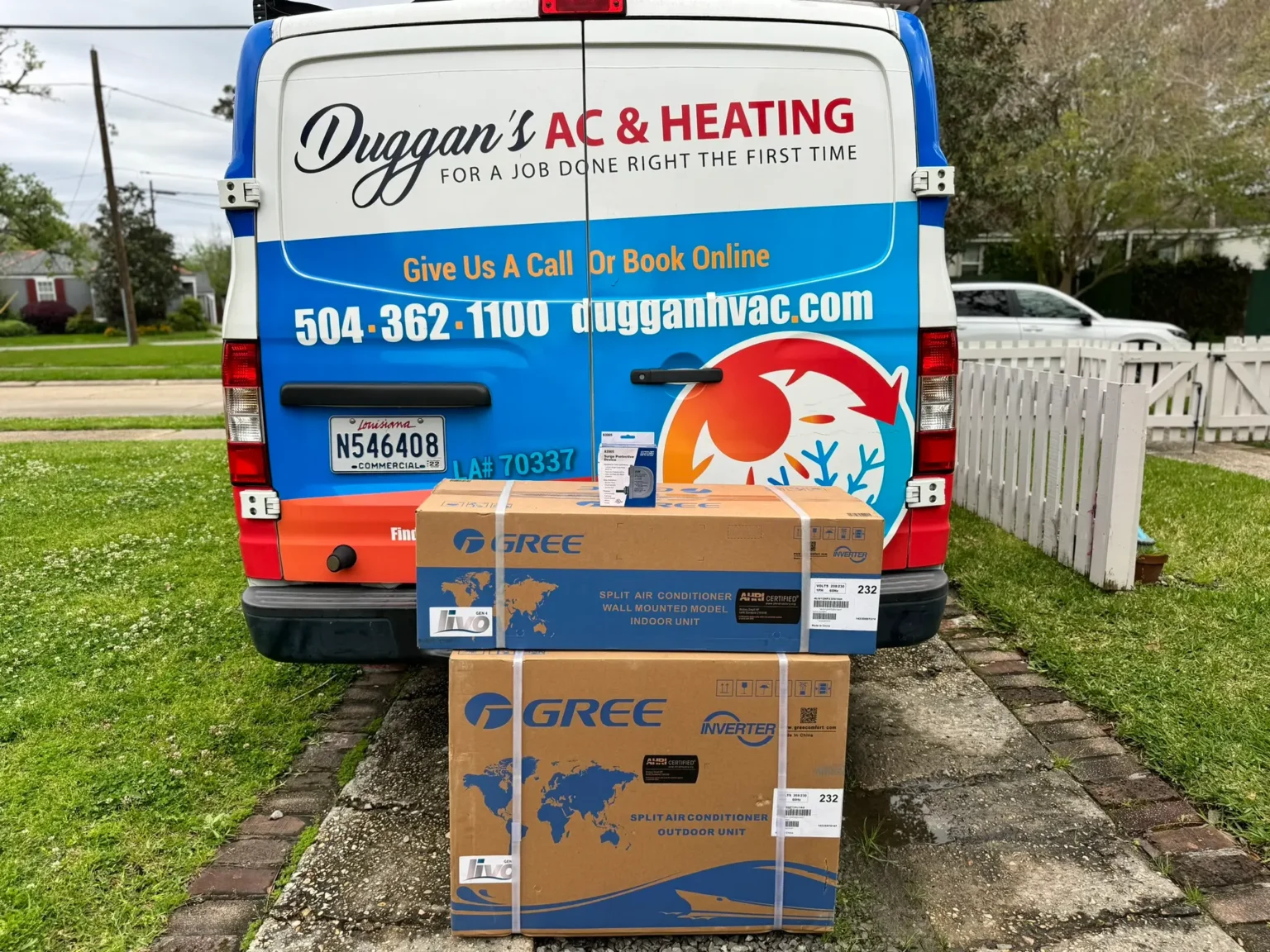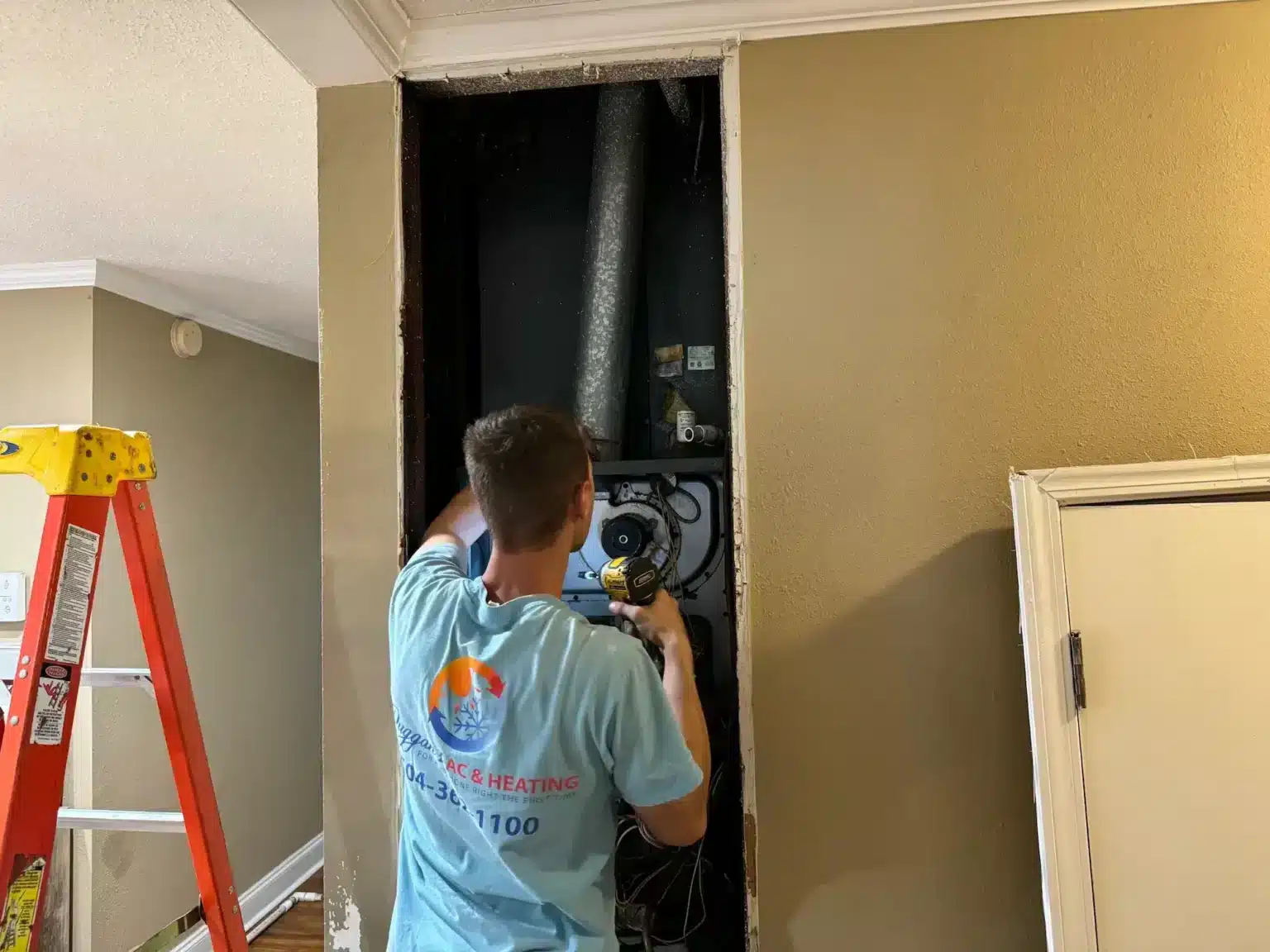When an air conditioner quits on a hot Louisiana day, panic usually sets in. The thought of being stuck in a warm, stuffy house makes most people search for answers fast. We hear this question a lot: “How do I fix an AC unit that isn’t working?” The good news is that some issues can be solved with a little patience and a basic check of your system. While some problems will require a professional touch, there are safe and simple steps you can take before scheduling a repair.
At Duggan’s AC & Heating, we want homeowners to understand their cooling system better. That doesn’t mean you need to be an expert—it just means knowing what to look for when your air conditioner is not kicking on or your AC unit is not working as it should.
Below, we’ve laid out 10 DIY troubleshooting steps to fix an AC unit before calling in a technician. Each step is explained in plain language, so you don’t feel overwhelmed.

1. Check the Thermostat First
One of the most common reasons an AC is not working is a thermostat problem.
- Make sure the thermostat is turned to “cool.” It’s surprising how often the setting gets switched accidentally.
- Look at the temperature setting. If it’s set higher than the room temperature, the unit won’t turn on.
- If your thermostat uses batteries, replace them. Weak batteries can cause the system to stop communicating with your AC.
Upgrading to a smart thermostat can help prevent these issues in the future. Smart devices allow you to control the temperature from your phone and often send alerts if something isn’t right.
2. Inspect the Power Supply
If the thermostat is working, the next step in learning how to fix an AC unit is to check the power.
- Look at the circuit breaker. If the breaker has tripped, reset it by turning it off and back on.
- Check the emergency shut-off switch near your indoor air handler or outdoor condenser. Sometimes it gets bumped off by accident.
- If the breaker keeps tripping, don’t keep flipping it back. That usually signals a larger issue that requires a professional AC repair.
3. Replace or Clean the Air Filter
A clogged air filter is one of the simplest but most common causes of an AC unit not working properly.
- Pull out the filter and look at it. If it’s gray, dusty, or full of pet hair, replace it.
- A dirty filter restricts airflow, making your system work harder and sometimes causing it to shut down.
- Change your filter every 1–3 months to keep your system breathing easily.
If your system still struggles after replacing the filter, it may be time to schedule AC maintenance to catch other airflow issues.
4. Check the Thermostat Wiring and Settings
Sometimes wiring inside the thermostat gets loose. If you feel comfortable, take off the cover and look for any disconnected or frayed wires.
- Make sure the wires are firmly attached.
- If anything looks damaged, stop and call a technician. Electricity can be dangerous.
5. Inspect the Outdoor Unit
Your outdoor condenser is just as important as the indoor system.
- Remove leaves, branches, and debris around the unit. A blocked condenser can cause the air conditioner to not kick on.
- Make sure the fan inside is spinning when the system runs.
- If the fan doesn’t move, or if you hear strange noises, the motor may be failing and will need professional attention.
For a full system evaluation, consider our Air Conditioning Installation & Replacement services if your unit is older than 12–15 years.
6. Look at the Drain Line
Air conditioners remove humidity from the air, and that water has to drain somewhere.
- Find the PVC pipe near your indoor unit. That’s the drain line.
- If it’s clogged, water can back up and cause the system to shut off.
- You can use a wet/dry vacuum to clear the line, but if it keeps clogging, you’ll need professional cleaning.
7. Listen for Strange Sounds
Pay attention to the sounds your unit makes.
- A clicking noise could mean a relay problem.
- A grinding or squealing sound may point to a motor issue.
- Loud banging usually means something has come loose inside the system.
Strange noises are rarely DIY fixes. If you hear them, call us right away for AC repair in New Orleans.
8. Check for Ice on the Coils
If you notice ice forming on the indoor or outdoor coils, that’s a red flag.
- Ice usually means airflow problems or low refrigerant.
- Turn off the unit and let the ice melt.
- Once thawed, replace the filter if it’s dirty. If the problem continues, refrigerant may be low, and you’ll need a licensed technician.
9. Inspect the Vents
Go around the house and check the vents.
- Make sure furniture or rugs aren’t blocking them.
- Open any closed vents. Closing vents doesn’t save money—it actually strains the system.
- Weak airflow through all vents often means a duct problem.
10. Know When to Call for Help
Sometimes, no matter how many steps you try, the AC unit is not working the way it should. That’s when it’s time to bring in the professionals.
At Duggan’s AC & Heating, we handle everything from routine maintenance to complete system replacements. We serve homes across Metairie, Belle Chasse, Gretna, and greater New Orleans.
Contact Duggan’s AC & Heating for AC Repair, Maintenance and Installation
Fixing an air conditioner doesn’t always mean grabbing a wrench and getting into complicated repairs. Many problems start with simple things like dead batteries, dirty filters, or a tripped breaker. By following these 10 steps, you’ll often find the cause of the issue quickly. Still, if your AC unit is not working after these checks, Duggan’s AC & Heating is here to help.
Don’t sweat through another Louisiana summer day without cool air. Call us at (504) 215-7031 or reach us through our Contact Page to schedule service. Whether you need AC repair, maintenance, or installation, we’ve got you covered.
FAQs About How to Fix an AC Unit
1. Why is my AC not working at all?
It may be a simple power issue, a tripped breaker, or a thermostat problem. If none of those fixes work, the system might need professional repair.
2. Why won’t my air conditioner kick on?
That usually means the thermostat isn’t signaling, the unit has lost power, or a safety switch has been triggered.
3. How often should I schedule maintenance?
We recommend professional AC maintenance twice a year—once before cooling season and once before heating season.
4. Can I fix low refrigerant myself?
No. Handling refrigerant requires EPA certification. Only trained professionals can safely add or repair refrigerant lines.




